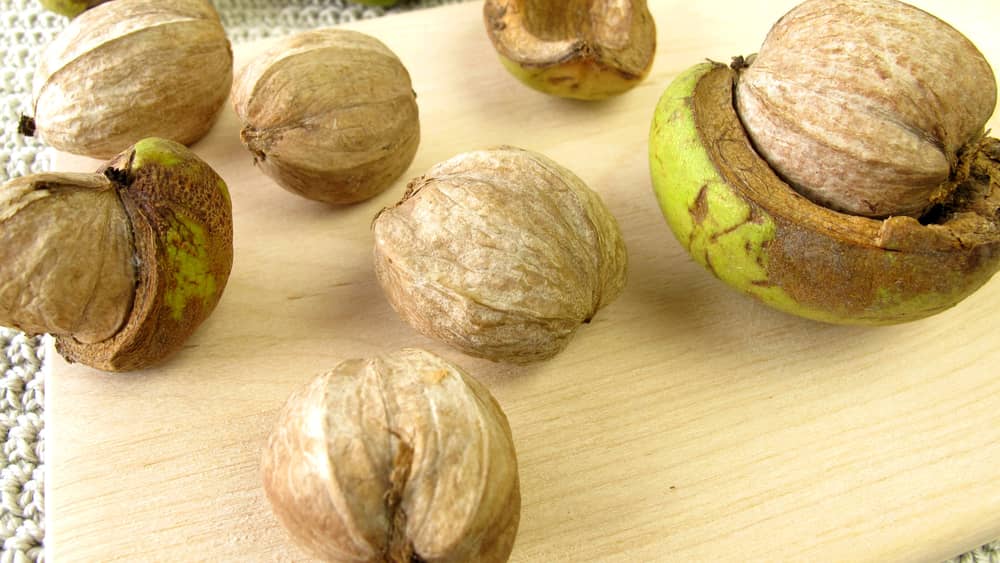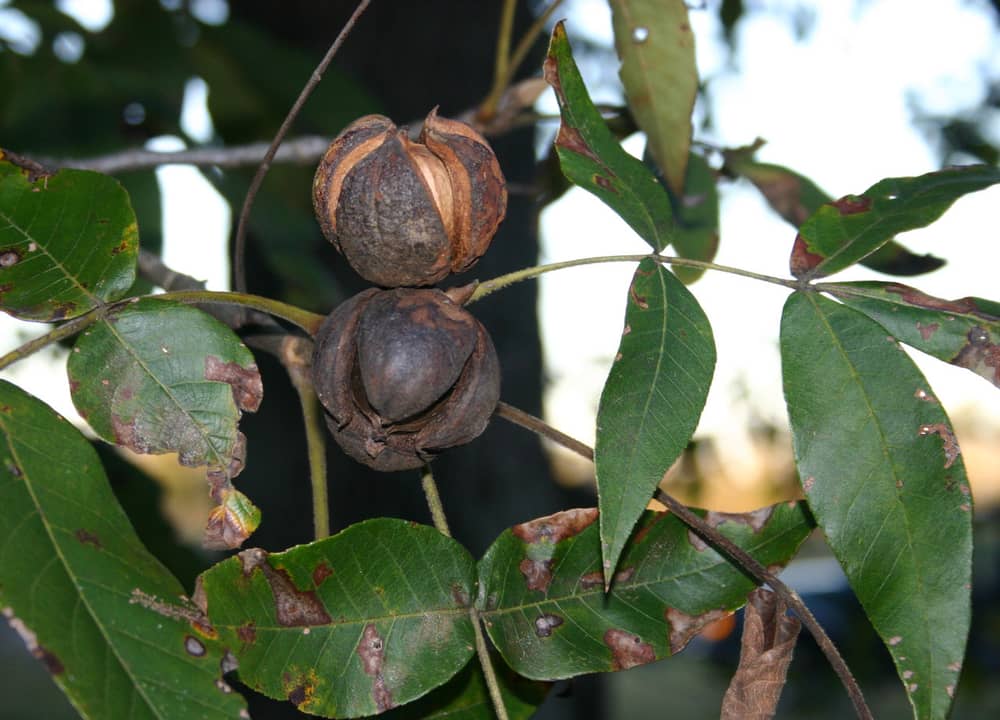Deer are interesting animals that have drawn people’s interest for millennia. Deer are fascinating animals because of their unusual feeding patterns, in addition to their aesthetic appeal. How do deer eat hickory nuts?
The exterior shells of hickory nuts are notoriously hard and difficult to crack apart. Despite this, deer can quite easily consume them.
But how do they actually do it? Their feeding habits and anatomy hold the key to the solution. Due to their sophisticated digestive systems, deer can obtain nutrients from a range of food sources. They also have strong jaws and teeth that are designed specifically for breaking apart hard shells.
We shall delve into the interesting world of deer and hickory nuts in this post. We will go into the specifics of deer feeding habits, including their physical adaptations and feeding methods.
Table of Contents
Do Deer Eat Hickory Nuts?

Hickory trees, which are indigenous to North America, produce hickory nuts, a particular kind of nut. Both their robust flavor and strong nutritional content make these nuts popular. They are also a well-liked food source for many animals, including deer.
Being herbivores, deer eat a wide variety of plant products, such as leaves, bark, fruits, and nuts. Deer feed on hickory nuts as a significant food source in the fall as they start to ripen and fall from the trees. High fat and carbohydrate content in hickory nuts gives deer the fuel they need to make it through the winter, when food is in short supply.
Hickory nuts are an important food source for deer since they are relatively accessible and have high nutritional content. Unlike other nuts, hickory nuts have a thin, easily shattered shell that deer may open with their teeth.
Although it is well known that deer eat hickory nuts, other species also rely on them as a food source. Hickory nuts are also known to be foraged by squirrels, chipmunks, and other rodents, who frequently stash them for later consumption. Many bird species, including woodpeckers, blue jays, and nuthatches, depend on hickory nuts as a food supply.
Hickory nuts are not always plentiful, despite their popularity as a food source. Hickory nut crops can vary from year to year in size and frequency. Deer may have to rely on other food sources in times of scarcity of hickory nuts, which can have a substantial effect on their health and general population dynamics.
Deer and other wildlife in North America rely heavily on hickory nuts as a food source. Hickory nuts are a great source of nutrition, but they are not always readily available. Deer must therefore adjust to environmental changes in order to survive.
How Do Deer Eat Hickory Nuts?

Hickory nuts are among the many nuts, seeds, and fruits that deer are known to eat while foraging in their natural environment. Deer can get plenty of nutrition from hickory nuts. Because they are full of the lipids and carbohydrates deer need for energy to live and thrive.
Deer have evolved many methods to get to the nutrient-rich nutmeat inside the tough, outer shell of hickory nuts for consumption. Deer must use their teeth to get to the nut meat since they lack the specialized adaptations needed to crack open nuts, unlike other animals like squirrels.
Step 1: Find & Transport
Deer will first use their feet to paw through trash and fallen leaves on the forest floor to find the hickory nuts before eating them. Once they have located a hickory nut, they will take it in their mouths and transport it to an area where they feel secure and comfortable so they can consume it.
Step 2: Open & Eat
Deer will grasp the hickory nut between their incisors and molars with their front teeth before cracking it open. Then, by clenching their teeth jointly, they will exert pressure on the shell until it breaks open. Deer will use their tongue to pull the nut meat from the shell when the shell has been cracked open and swallow it.
Other Ways They Find And Eat Hickory Nuts
Not all hickory nuts, though, are simple for deer to crack open. Certain nuts could be too dense or difficult for deer to crack open using just their teeth. Deer in various situations could employ different methods to get to the nutmeat. The nut will eventually break open after being dropped on a hard surface or rubbed against a tree trunk.
Deer use their sense of smell in addition to their teeth to find hickory nuts. Due to their keen sense of smell, deer are able to discern the aroma of ripe hickory nuts from a distance. They can discover hickory nuts more quickly and effectively because of this skill.
In order to consume hickory nuts, deer have evolved a variety of strategies, including utilizing their teeth to crack open the shell and their noses to detect ripe nuts. Deer can get this crucial food source and remain in their natural habitat by adjusting to their environment and mastering certain skills.
What Kind Of Nutrients Do Hickory Nuts Provide For Deer?
Deer can get a variety of nutrients they need from hickory nuts, which are a good source of nutrition for deer. High quantities of fat, protein, and carbs can be found in these nuts.
In particular, hickory nuts give deer the energy they require to regulate their body temperature and keep active during the winter months since they are high in carbohydrates and lipids. They also include a lot of protein, which is necessary for the development and upkeep of muscles and other structures.
Together with these macronutrients, hickory nuts also include a number of micronutrients like calcium, phosphorus, and potassium that are crucial for the health of deer. Potassium is necessary for healthy muscle and nerve function, whereas calcium and phosphorus are crucial for bone growth and preservation.
Hickory nuts can offer deer a complete nutritional source overall. In regions where they are plentiful, this makes them a valuable food source for deer populations.
What Nuts Do Deer Eat?
The diet of deer, which consists of a variety of items like nuts, fruits, grasses, and even mushrooms, is one of the species’ most intriguing characteristics. We’ll concentrate on the nuts that deer frequently consume.
Acorn
The acorn is one of the most significant nuts in a deer’s diet. The acorn, an oak tree’s fruit, is common in many forests and woodlands. The two most prevalent deer species in North America, the white-tailed deer and the mule deer, both largely rely on acorns as a food supply. Acorns are a good source of protein, fat, and carbs. As a result, deer find them to be a great source of energy, particularly during the fall and winter.
Hickory Nut
The hickory nut is another crucial nut in the diet of deer. In addition to being rich in protein and fat, hickory nuts are crucial for deer during the winter. Along with being a significant source of food for deer, hickory nuts are a common tree in the eastern portion of North America.
Beech Nuts & Chestnuts
Deer also consume chestnuts and beech nuts, however they are less frequent in some areas. Much of the eastern United States is covered with beech trees, and these trees’ nuts are a vital source of nutrition for many different wildlife species. Although some wildlife managers are striving to return chestnut trees to forests and woodlands, deer now consume less chestnuts than they once did.
Walnuts
Although they are not as frequently seen in a deer’s diet as some of the other nuts mentioned above, walnuts are another sort of nut that deer may eat. Native to North America, walnuts are a vital food source for many different wildlife species. If walnuts are present in the deer’s habitat, they might also eat them.
Deer are versatile creatures that have developed a variety of dietary habits to enable them to thrive in a number of habitats. For many different kinds of deer, nuts are an essential nutritional source. They give deer the fuel and food they require to live.
Final Thoughts
Hickory nuts, a plentiful source of protein, fat, and carbs, are reported to be consumed by deer. How do deer eat hickory nuts? A deer would often use its muscular jaws to tear apart the tough outer shell of a hickory nut and access the meaty kernel inside before devouring it. We can manage and preserve deer populations in the wild more effectively if we have a better understanding of their food preferences.

